Color
The interior design of any room, including the kitchen, is, first of all, color. Yes, materials are important, but color is the first thing that catches the eye. Our perception of space depends on it, it sets the mood. Designers are still arguing about which color is the most practical. Some are for beige, others for coffee, and some put white in first place.
As a rule, most kitchens in our country are small, so it is better to use light colors, for example, light gray or the same white.
Moreover, white, despite its seeming impracticality, unexpectedly turns out to be the most suitable. Dust, water stains, and splashes are not visible on it. It does not fade with uneven spots from sunlight.
You can use a reflective surface to further expand the room visually, but fingerprints may be visible on the gloss in certain lighting.
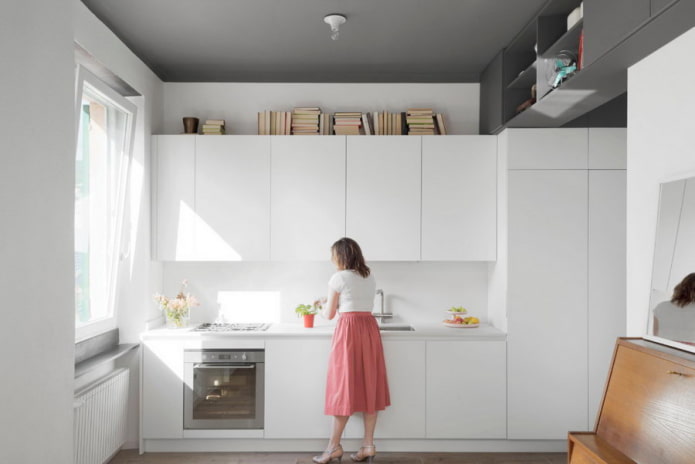
Walls
Today, when the market offers a huge range of materials – from washable wallpaper and decorative plaster to plastic panels, but the most practical material is still tiles.
Good ceramics are durable, not afraid of temperature changes, humidity, easy to clean, difficult to scratch. This is exactly the option you need for an indestructible kitchen.
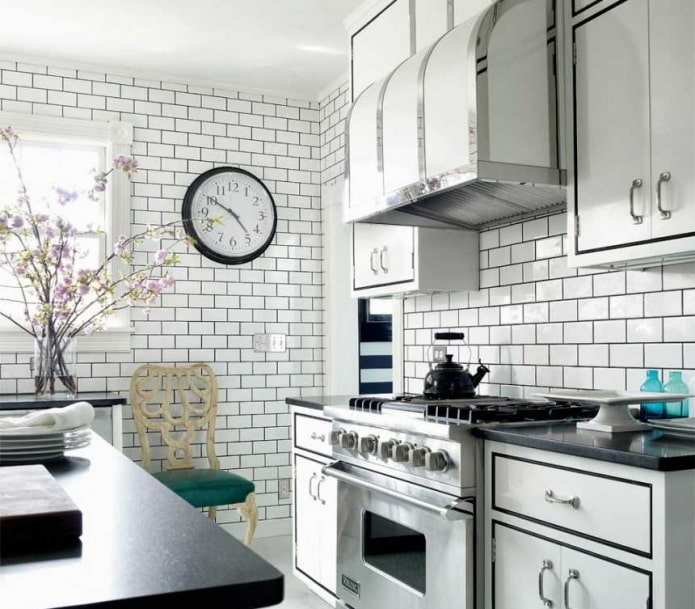
Apron
It would seem that an apron is a piece of the wall above the work surface and behind the stove, which means it needs to be finished in the same way. Indeed, the most common material for decorating an apron is ceramic tile. But is this option so practical?
The main drawback is the inter-tile joints. If the tile surface itself has all the necessary properties, then the joints are a very weak point. The apron is washed much more often than other parts of the walls, which means that the grout will quickly become unusable. It will have to be updated frequently, and this is troublesome.
We will not consider options made of MDF, plywood and other materials, which, although offered by manufacturers, do not have the necessary properties.
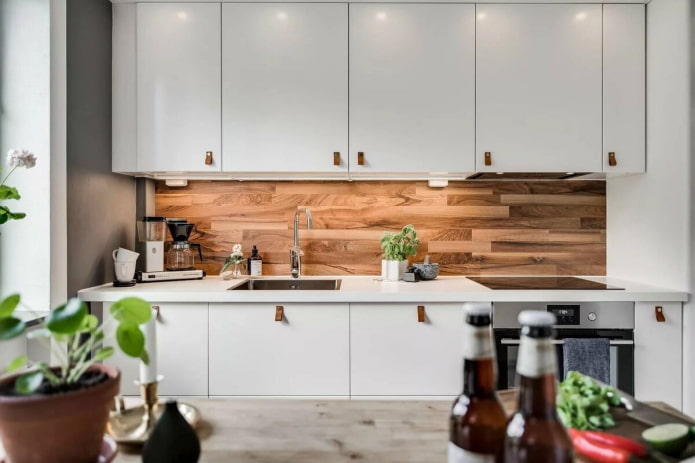
Suitable materials include stone, both natural and artificial. The first option is hygroscopic, absorbs odors, and is difficult to maintain. The second is afraid of high temperatures, and also cannot be seamless if it is large. Therefore, you understand – let’s move on.
The most practical option remains a glass apron. The level of practicality is maximum – install and forget for many years. Tempered glass is very durable, you can wash it with any means, rub it with a brush (of course, not a metal one). Glass does not scratch, is not afraid of high temperatures, sunlight is nothing, no seams. In addition, behind transparent glass you can make any design, even with the most fragile materials, from a photo collage to imitation marble or brickwork.
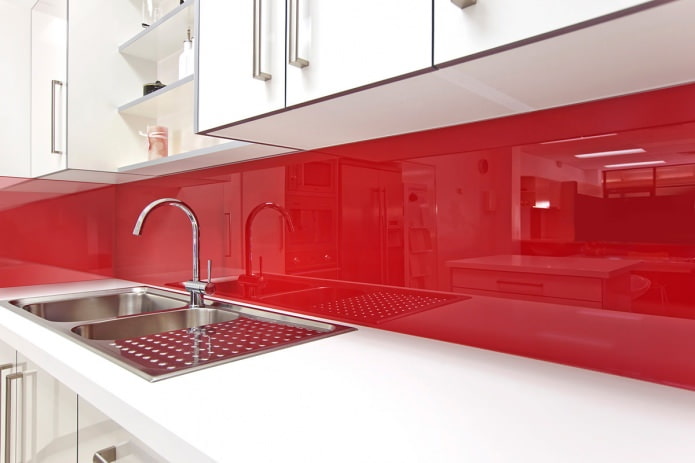
Floor
When choosing a material for the floor in the kitchen, you need to consider all the risks inherent in this room. And the main factor is water (spillage, leakage, wet steam). In addition, dirt accumulates on the kitchen floor the fastest.
Yes, the kitchen is washed even more often than the hallway, that is, the floor wears out more often and is exposed to more detergents. And another important factor is contact with various products, such as beets, coffee, wine, which can stain the floor “forever”.
Based on the above risks, the floor material needs to be universal, and there is such a thing – ceramic tiles, and even better – porcelain tiles.
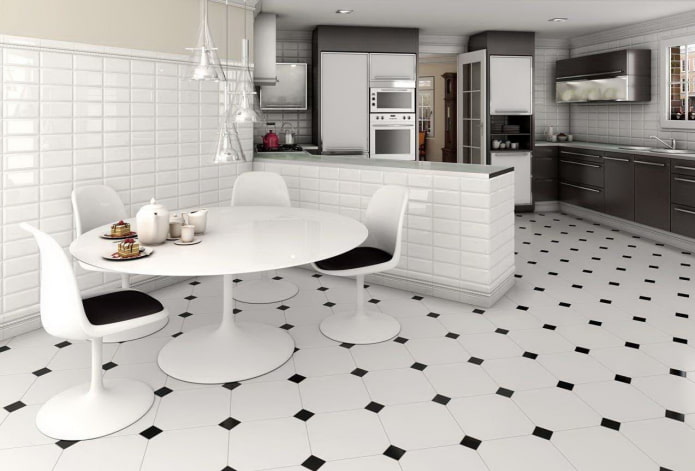
We immediately rejected natural wood for obvious reasons, laminate, which has become especially fashionable. There are also very practical options with polished concrete and self-leveling floors. However, their disadvantages are that they are difficult to repair.
Modern porcelain stoneware has all the properties that are suitable for the most indestructible kitchen. In addition, the modern market offers a huge selection of textures and colors. You can choose at least under marble, at least under natural parquet.
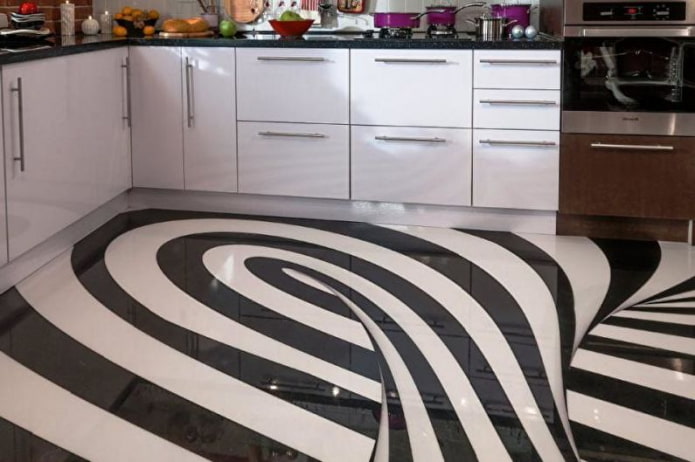
Ceiling
Although there are many options for finishing the ceiling, but after the appearance of stretch ceilings on the market, the relevance of the rest simply disappeared.
Stretch ceilings are durable, are not afraid of moisture or temperatures, are easy to care for, fit into any design. This is the perfect choice for a perfect kitchen.
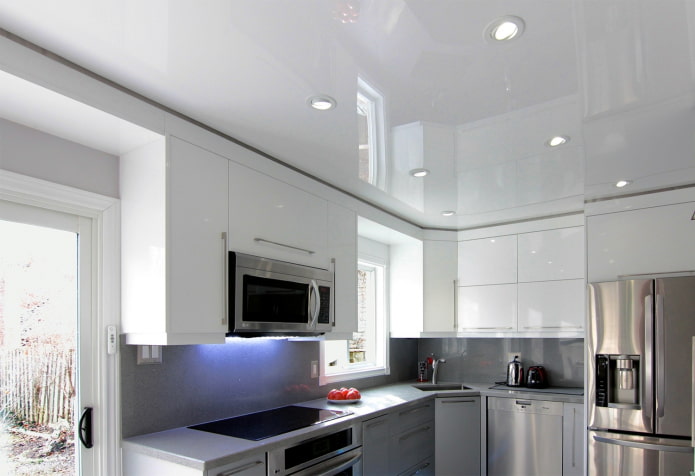
Kitchen set
To paraphrase a classic, we will say – as many masters, so many options for kitchen sets, but we need the most practical. So, a set is:
- Facades. This is what we see when we look at a kitchen set – doors and drawer surfaces. You can use natural and artificial materials. Of the natural ones, solid oak or beech will be the best. Of the artificial ones, MDF / chipboard is common, but high humidity spoils the picture. And our goal is to install and forget. There are also plastic facades – they are quite durable and can last a long time if properly cared for.
- Fittings. You can’t just guess with hinges, you need to rely on the advice of a professional in each specific case. But the most practical handles are metal, and with a minimal relief, because dust gets into it.
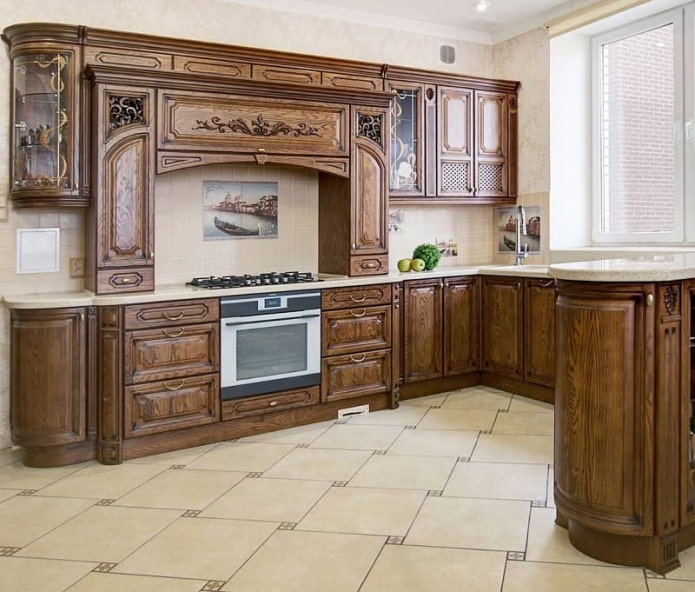
Countertop
Housewives know for sure that you shouldn’t be led by beauty when choosing a countertop. The canvas must withstand everything:
- high temperatures;
- moisture;
- aggressive environments (detergents, vinegar, etc.);
- strong mechanical impacts.
In addition, maintenance should be simple, and the appearance attractive. And by all characteristics, the best material is artificial stone, also known as agglomerate, also known as composite.

Sink
Everything is simple here – chromium-nickel alloy or simply stainless steel. Having appeared once, such sinks are still the most practical.
Despite the existing disadvantages (noisy, sometimes scratches), these sinks serve for a very long time, and look aesthetically pleasing throughout their entire service life.
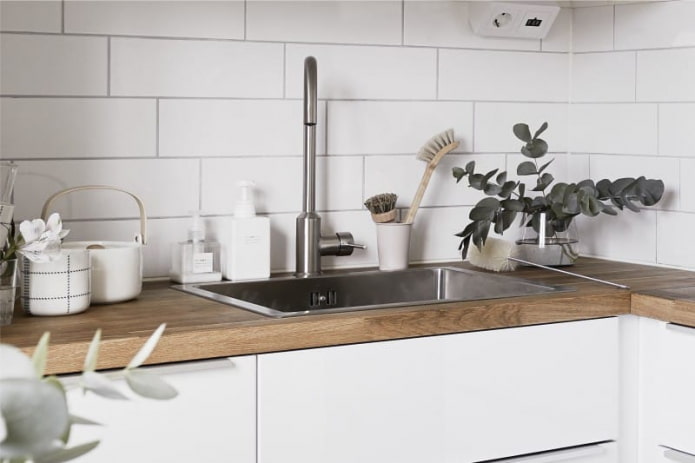
Furniture
What kind of kitchen is it without a dining area, a comfortable bar counter and a kitchen corner? We will leave the issues of design and style, since maximum practicality is important to us, that is, the main focus on the material for the furniture. What furniture is the most indestructible?
Manufacturers offer kitchen furniture from a variety of materials, from chipboard to metal, and some handy people also add, for example, furniture made of cement (concrete). This is truly indestructible furniture, but it has a number of disadvantages, the main one being its enormous weight.
We will not consider wood substitutes such as chipboard, fiberboard and MDF, due to the short life of such material in kitchen conditions. The only exception is plywood, which is a strong and durable material.


The most common furniture that has settled in kitchens is made of solid wood. The material is practical and affordable (if it is not valuable wood). Hardwoods are more preferable: Oak, Beech, Ash. However, solid pine furniture also lasts for many years.
You can also look at metal furniture, it will definitely not wear out for many decades. A combination of metal and durable tempered glass will look especially good and last a long time.
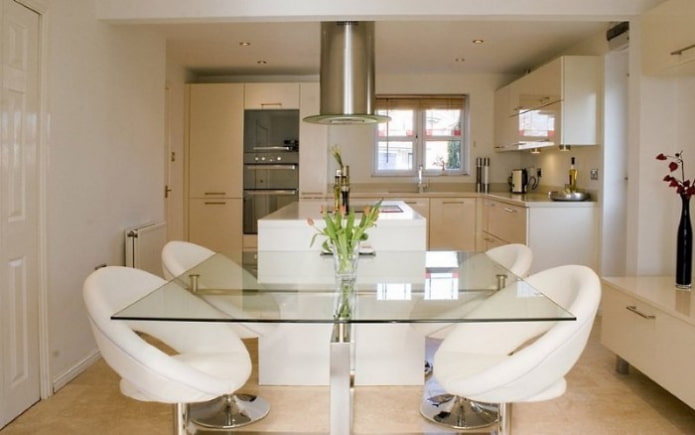
Textiles
Textiles in the kitchen set the tone (curtains), add accents (tablecloths, rugs, towels). The difference from textiles in other rooms is that kitchen textiles are used more intensively. Therefore, practicality should be in the first place, in order to withstand frequent washing.
Blended fabrics with a high content of bamboo, linen, cotton are suitable for the kitchen. Of the curtain models, it is best to consider roller blinds, Roman blinds or blinds.
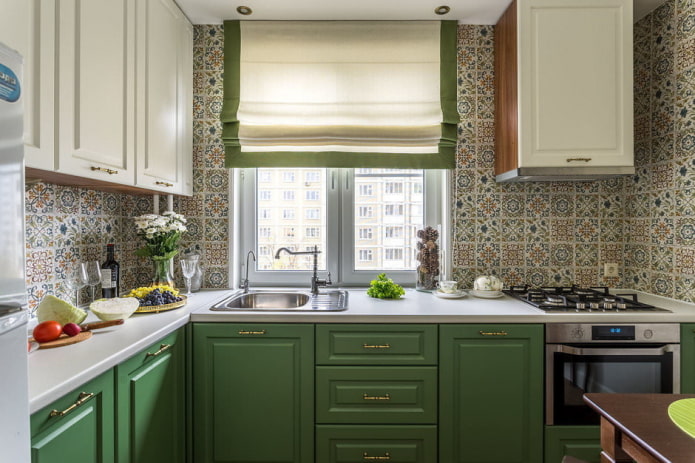
Well, here we have assembled the most practical kitchen, which will serve us for many years, and will remain fresh and relevant throughout this time.
Now reading:
- Decking: 36 photos, advantages, disadvantages and methods of use.
- Ideal combinations of curtains and wallpaper: 10 stylish solutions for your interior.
- 10 Creative Wall Decor Ideas for Those Tired of Banality (31 Photos)
- Country living room: 40 photos and interior decorating tips.
- Corner cabinets for the living room: over 50 photos and modern design solutions